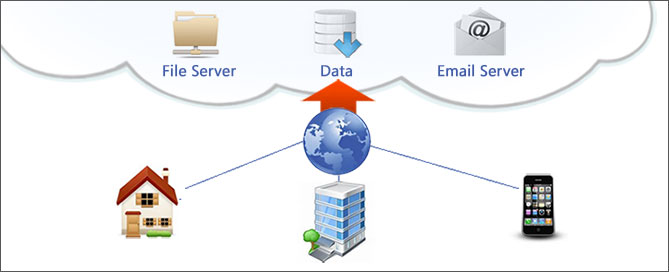As a modern small- or medium- sized business, it is a great time to begin planning to move some, if not all systems to the cloud if you haven’t already.
The benefits of the cloud are proven and can save your business an incredible amount of money in the long-run if implemented properly. However, transitioning to the cloud can be a daunting task, even for the most seasoned IT experts. No business is the same as another, and the requirements and obstacles in each such project are unique to your business.
Reasons for moving to the cloud are numerous, including, but not limited to:
- Data demands have grown exponentially over the years. The cloud offers extremely scalable, cost-effective and easy to implement storage capabilities.
- Increasing demand to lower IT spend and lower budgets without negatively affecting service.
- A continually growing need to rapidly provision applications and storage to users
- Rapidly evolving business requirements require equally as rapid implementation
- Growing demand to access data from any device from anywhere while maintaining security
So where do you begin?
Step 1: Begin by taking an inventory of your current capabilities and needs. Identify hardware that can be transitioned. Ask users for suggestions. What new processes can help them do their job better?
Step 2: Choose a migration plan that makes sense. Migrate services in phases. Re-purpose existing hardware to fit into the newly planned cloud infrastructure.
Step 3: Put together a team of users you would identify as the optimal users for each service being transitioned to the cloud. These users should be those users both most knowledgeable on the specific service, as well as most apt to foresee and communicate problems with using the new cloud service they are testing.
Step 4: Review and tweak your production move plan. As you step through the phases of transitioning your services to the cloud, it is critical users are prepared for each step and are properly trained in the new services. Without this, you could experience a slow down in productivity and a negative response to the switch.
Combining Cloud Services with Managed Services
Moving to the cloud, as previously mentioned, is a daunting task. By outsourcing the project to an expert provider in such projects, you can greatly reduce the cost, time, and room for error in the transition. Additionally, a well chosen provider can greatly enhance the security of your cloud environment. More than 70% of IT budgets are spent on operations and maintenance. This number can be greatly reduced by outsourcing. Additional benefits include freeing IT Staff up for strategic planning, access to cloud specific expertise, and services better aligned with you business needs.
Why choose Dynamic Solutions Group for your Cloud and Managed Service Needs?
Dynamic Solutions Group cloud services reduce your hardware, software, networking management and overall IT expenses. With DSG Cloud Services, you only pay for what you use. Our expertise in all areas of technology ensure solutions that are catered to your unique needs.
For more information on how we can help your business and to schedule a free demo or consultation, contact us today!






